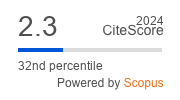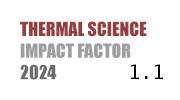THERMAL SCIENCE
International Scientific Journal
Authors of this Paper
External Links
PATHWAY OF REDUCING CO2 EMISSION AND HARMFUL EXHAUST GASES IN TRANSPORT BY USING ELECTRIC BUSES: THE EXAMPLE OF BELGRADE
ABSTRACT
The buses have an irreplaceable role in the public transport system, regardless of city size. Buses powered by internal combustion engines (diesel, CNG) are still the most common concept of city buses, but in the last few years, the use of fully electric buses has been growing. One of the reasons for the increasing use of electric buses is their environmental advantages over conventional buses: zero emissions at the local level (tank-to-wheel) emission, more favorable CO2 emissions at the regional or national level (well-to-wheel), and higher energy efficiency. The EKO1 line (Vukov Spomenik-Belvil) has operated in Belgrade since 2016, with five full electric buses. The paper will present the environmental aspects of using electric buses on line EKO1 compared to diesel and CNG buses. The environmental aspects of electric buses were researched through the effects of reducing the emission of harmful exhaust gases caused by eliminating the use of diesel-powered or CNG-powered buses and introducing electric buses. Within the ecological suitability of the using electric buses, the emission of CO2 that occurs indirectly during electric-ity production was researched and a comparison was made with the emissions of CO2 caused by the combustion of diesel fuel and CNG in buses with conventional propulsion. The paper also examined the energy efficiency of buses with different drive systems on the line EKO1, based on the analyzed energy consumption. As a result of the analysis, the introduction of electric buses on the EKO1 line was justified from the point of view of improving the environment through the reduction of harmful gas emissions and decarbonization as well as better energy efficiency.
KEYWORDS
PAPER SUBMITTED: 2024-07-13
PAPER REVISED: 2024-10-15
PAPER ACCEPTED: 2024-10-21
PUBLISHED ONLINE: 2024-11-09
DOI REFERENCE: https://doi.org/10.2298/TSCI240713246M
CITATION EXPORT: view in browser or download as text file
2025 Society of Thermal Engineers of Serbia. Published by the Vinča Institute of Nuclear Sciences, National Institute of the Republic of Serbia, Belgrade, Serbia. This article is an open access article distributed under the terms and conditions of the Creative Commons Attribution-NonCommercial-NoDerivs 4.0 International licence

